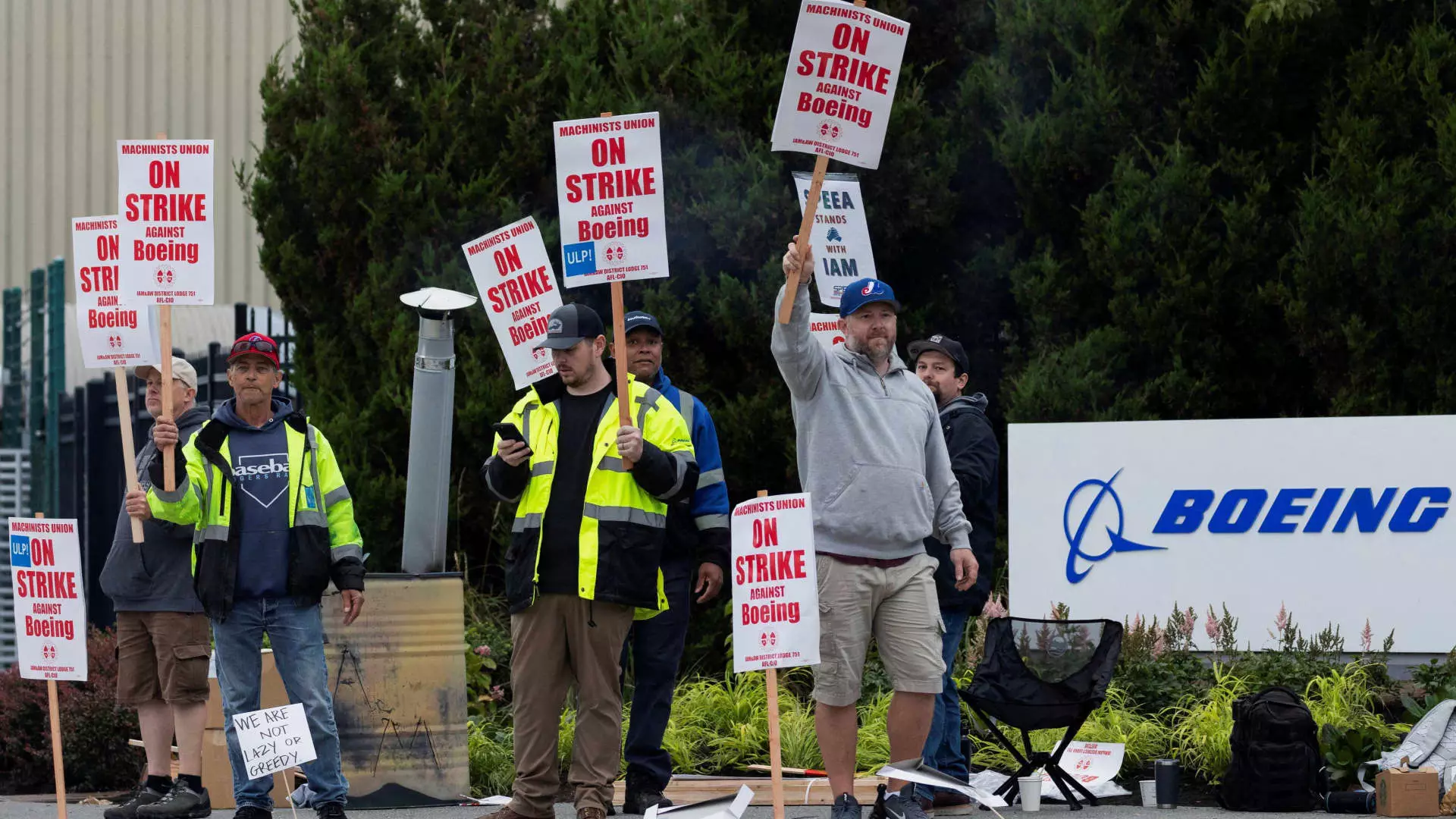Boeing is currently grappling with the repercussions of a machinist strike that has entered its second week, stemming from workers’ demands for higher wages and improved working conditions. The strike is not only a response to the employees’ escalating financial struggles but also highlights the broader implications of industrial action within the company at a time of considerable economic uncertainty. Each day the strike continues is estimated to cost Boeing approximately $50 million, a hefty sum considering the company is already burdened with $60 billion in debt. As financial analysts closely monitor the situation, they warn that prolonged labor disputes could further degrade Boeing’s credit rating, complicating their financial recovery efforts.
The impact of the strike is felt not just at Boeing, but throughout the aerospace supply chain. With production of aircraft on hold, suppliers are beginning to halt shipments as well. This chain reaction reflects the interdependent nature of the aerospace industry and raises concerns about the potential for broader economic repercussions if the strike extends beyond a few weeks.
As Boeing machinists stand on picket lines, their determination to strike for fair compensation is palpable. Many have expressed their readiness to take on side jobs—ranging from landscaping to moving furniture—demonstrating their commitment to making ends meet during the disruption. Despite their love for the work of assembling airplanes, the reality of high living costs in the Seattle area is significantly affecting their livelihoods. Data underscores this, with Washington state’s median home price soaring dramatically over the last decade. Workers like Jake Meyer share their frustrations and plans to supplement their income, revealing a trend of sacrificing everyday comforts for the sake of financial viability.
The strike was initiated when around 30,000 machinists voted overwhelmingly against a tentative labor agreement, displaying a clear desire for stronger wage increases than what Boeing has proposed. While the company’s latest offer included a 25% wage increase over four years, union members are pushing for increases closer to 40%, alongside restoration of previously lost pension benefits. The negotiation atmosphere remains tense, with both parties expressing disappointment at the lack of meaningful advancements, leading to increased anxiety among the workers who face potential loss of health benefits shortly.
Boeing’s new CEO Kelly Ortberg, who has only been in the role for a brief period, is facing unprecedented challenges in navigating the labor dispute while trying to stabilize the company’s financial situation. With the stakes being incredibly high, Ortberg has made moves to temporarily furlough tens of thousands of staff, a strategy intended to cut costs amid ongoing negotiations. However, it raises questions about workforce morale and the company’s ability to retain skilled labor in an already tight labor market.
The company’s attempts to engage in negotiations have not produced the desired results so far. Ortberg recently stated that while Boeing remains committed to addressing the union’s top concerns, the pace of negotiations has frustrated many workers. The historical context of the last Boeing strike in 2008, which lasted fewer than two months, highlights the changed landscape today: with a tighter job market and a higher cost of living, employees are less likely to accept unfavorable deals.
This strike is emblematic of a larger trend in labor movements across various industries. From actors to autoworkers, numerous labor forces have mobilized in recent years demanding better pay and working conditions, reflecting a growing willingness to challenge employers. This trend hints at a shifting public consciousness around labor rights, as workers increasingly vocalize their expectations for equitable compensation and treatment.
The Biden administration has also taken an active interest in the negotiations, with Transportation Secretary Pete Buttigieg expressing hope for a resolution that would benefit both workers and the company. This level of attention signifies the potential ramifications of the strike beyond just Boeing, as the outcomes may inspire other labor groups to pursue similar actions in their respective fields.
As the future of the strike remains uncertain and ongoing negotiations continue, the situation at Boeing stands as a critical intersection of economic pressures, labor rights, and corporate accountability. The machinists’ fight for higher wages and better working conditions is not merely about their immediate circumstances; it speaks to larger themes affecting workers nationwide. Whether Boeing can navigate these turbulent waters and emerge with a solution that satisfies both their financial objectives and the rightful demands of their workers will significantly shape the company’s trajectory in the years to come.

